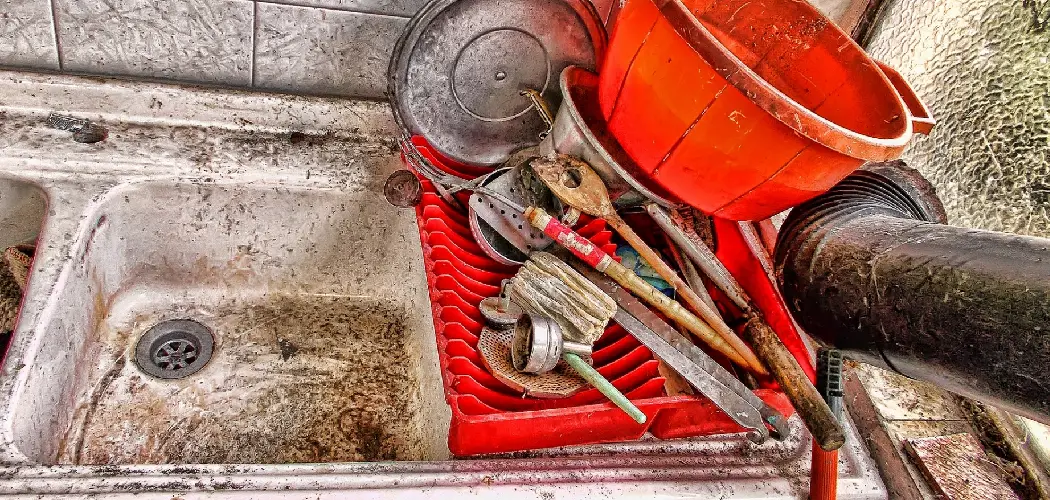Coffee lovers know the frustration of dealing with a clogged sink after rinsing out coffee grounds. The grounds may seem harmless, but they can accumulate and block your plumbing, leading to slow drainage or even complete obstruction.
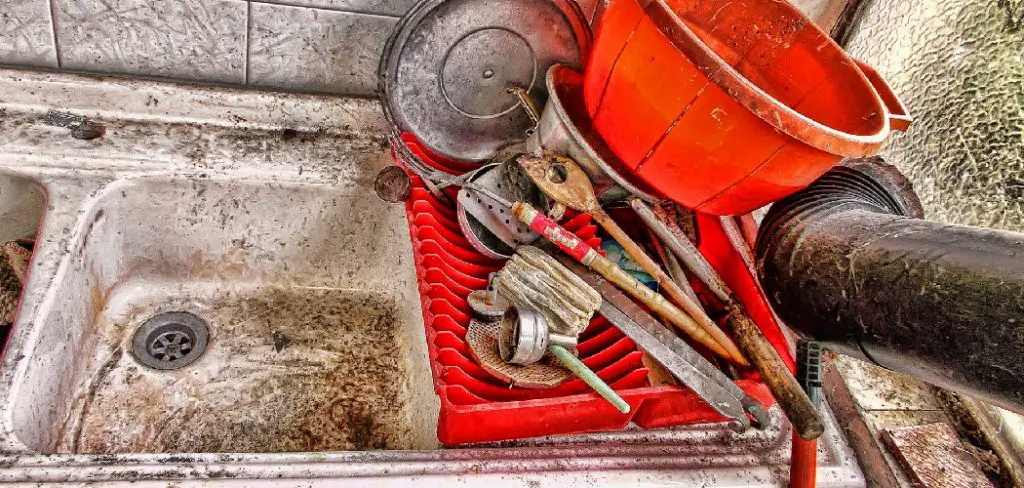
Understanding how to effectively unclog coffee grounds from your sink will save you the hassle of costly repairs and ensure your kitchen remains in top-notch condition. In this guide on how to unclog coffee grounds from sink, we’ll provide you with simple, step-by-step instructions to clear those stubborn clogs and prevent future blockages.
What Causes Coffee Grounds to Clog Your Sink?
Coffee grounds are the residue left after brewing coffee. They may seem small and insignificant, but they can cause significant damage when disposed of down the drain. When coffee grounds mix with grease, oil, or any other food particles in your sink, they form a thick paste that hardens and sticks to the inner walls of your plumbing. Over time, this buildup restricts water flow, leading to clogs.
You may also be unknowingly contributing to clogged drains by rinsing your coffee grounds down the sink with hot water. Hot water causes the oils in coffee beans to liquefy, making it easier to stick to the pipes and create blockages. The same goes for dumping large amounts of ground at once rather than disposing of them in small portions.
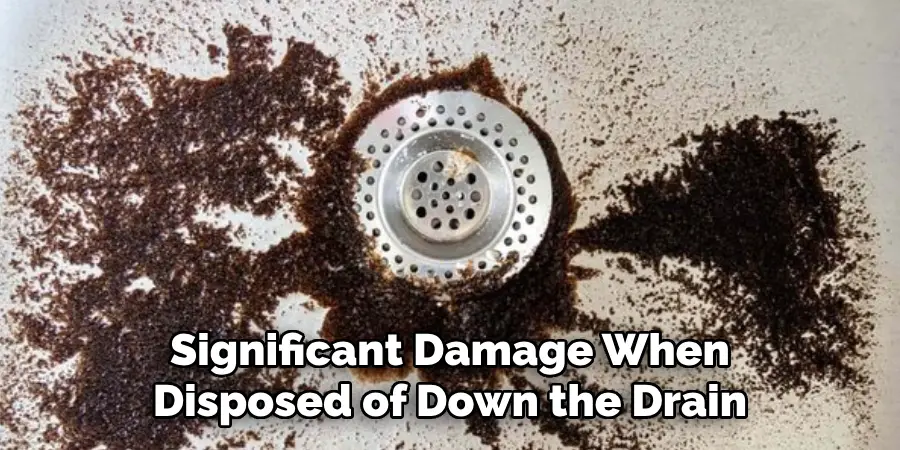
Materials You’ll Need
Plunger:
A plunger is a basic tool used to create suction and dislodge clogs in sinks and toilets. You can find plungers at most hardware stores or online.
Baking Soda and Vinegar:
The combination of baking soda and vinegar creates a chemical reaction that helps break down the coffee grounds, making them easier to remove.
Boiling Water:
Boiling water can help dissolve any remaining oils in the pipes, further aiding in clearing the clog.
11 Step-by-Step Guide on How to Unclog Coffee Grounds From Sink
Step 1: Remove Any Standing Water
Before you start unclogging your sink, it’s important to remove any standing water. Use a small container, cup, or sponge to scoop out the water and dispose of it in another sink or bucket. Removing the excess water will allow you to see the drain clearly and ensure that your unclogging efforts are more effective. If water is still draining slowly, let it continue to drain until it stops, then proceed to the next step.
Step 2: Prepare Your Plunger
Once the standing water has been removed, it’s time to prepare your plunger for the task. Ensure that the plunger’s rubber cup is clean and free of any debris that could interfere with creating a good seal. Position the plunger over the drain, making sure it completely covers the drain opening. For the most effective results, run some water to cover the plunger’s suction head which will help create better suction. With the plunger in place, you are now ready to start plunging vigorously up and down to dislodge the clog. Make sure to maintain a tight seal around the drain to maximize the pressure and effectiveness of the plunging.
Step 3: Plunge Repeatedly
With your plunger properly positioned, it’s time to plunge repeatedly to force the clog to loosen. Use firm, consistent motions to push and pull the plunger up and down. Aim for a steady rhythm, applying enough force to create strong suction and pressure. You may need to plunge for several minutes, so be patient and persistent. If you notice the water starting to drain, it’s a good sign that the clog is beginning to dislodge.
Continue plunging until the water drains freely. Once the water starts flowing down the drain more easily, you can stop and check to see if the clog has been completely removed. If the sink is still draining slowly or remains clogged, you may need to repeat the plunging process a few more times.
Step 4: Use Baking Soda and Vinegar
If using a plunger fails to unclog your sink, the next step is to use baking soda and vinegar. This natural cleaning solution can help dissolve any remaining coffee grounds and oils, making it easier to remove them from your pipes.
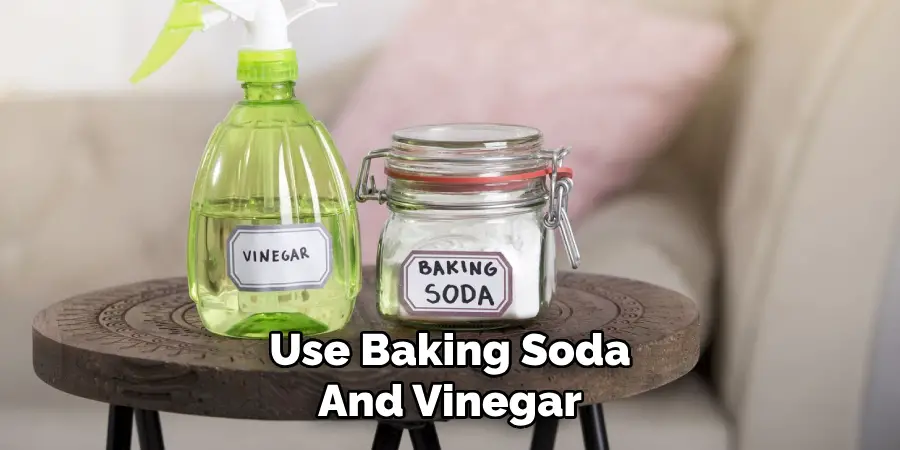
Start by pouring half a cup of baking soda down the drain, followed by one cup of vinegar. The mixture will start to bubble and fizz, which is normal and indicates that the chemical reaction is taking place. Let the solution sit for 10-15 minutes to work its magic.
Step 5: Pour Boiling Water
After allowing the baking soda and vinegar mixture to sit and break down the clog, it’s time to pour boiling water down the drain. Boil a pot or kettle of water and carefully pour it directly into the drain. The hot water will help to wash away any remaining debris, oils, and coffee grounds that the chemical reaction may have loosened.
This step not only helps to clear up any residual blockage but also ensures that any remaining oils in the pipes are dissolved. Be cautious while handling boiling water to avoid burns or spills. If the sink is still draining slowly, you may need to repeat the process or move on to additional unclogging methods.
Step 6: Use a Drain Snake
If the above steps fail to clear the clog, you may need to use a drain snake. A drain snake is a long and flexible auger that can reach deep into your pipes and break up any stubborn debris. Insert one end of the snake into the drain and slowly push it down until you feel resistance or reach the blockage. Once you’ve reached the clog, twist and turn the snake to break up and dislodge the obstruction, and continue until you are confident that the clog has been removed.
Step 7: Try Using a Wet/Dry Vacuum
A wet/dry vacuum can also be used to remove coffee grounds from your sink’s drain. Set up your vacuum to suck up liquids, and then carefully hold the hose over the drain. Turn on the vacuum and let it run for a few minutes, making sure not to create too much suction as this may cause damage or push the clog further into your pipes. After a few minutes, check to see if the water is draining more easily.
Step 8: Use Commercial Drain Cleaners
If none of the above methods prove successful in clearing your sink’s clog, you can try using a commercial drain cleaner. These products contain chemicals that are designed to dissolve blockages and clear out drains. Be sure to follow the instructions on the product carefully, as these chemicals can be harmful if not used correctly.
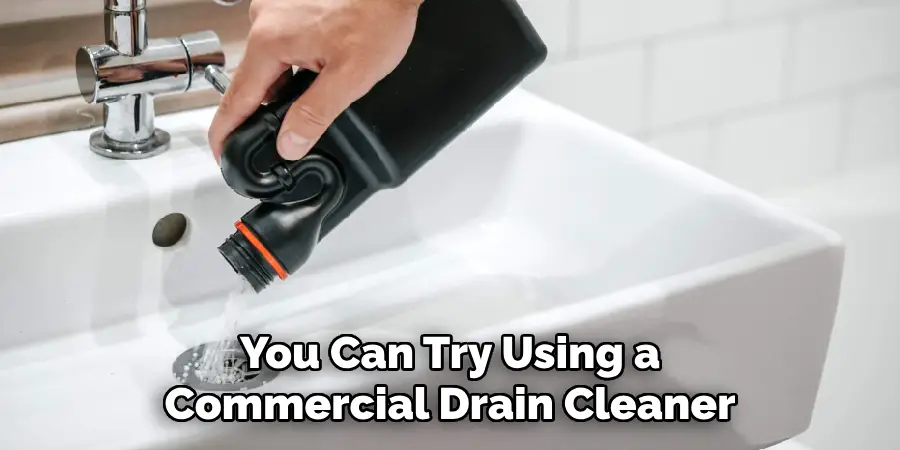
Step 9: Call a Professional Plumber
If all else fails, it may be time to call a professional plumber. They have the necessary tools and expertise to quickly and effectively clear any clogs in your sink’s drain. It may cost more than trying to unclog it yourself, but it can save you time, effort, and potentially prevent further damage or complications.
Step 10: Prevent Future Clogs
After successfully unclogging your sink, it’s important to take steps to prevent future clogs. Avoid pouring coffee grounds down the drain and use a stopper or filter to catch any debris before it enters the pipes. Regularly clean your sink’s drain with hot water, baking soda and vinegar, or commercial drain cleaners to keep it free of buildup and blockages.
Step 11: Properly Dispose of Coffee Grounds
When disposing of used coffee grounds, it’s important to properly dispose of them in the bin rather than washing them down the sink. This will help prevent potential clogs and keep your pipes clear. Alternatively, you can also add coffee grounds to compost or use them as a natural cleaning scrub for your sink.
By following these steps on how to unclog coffee grounds from sink and taking preventative measures, you can easily unclog your sink’s drain and keep it running smoothly. Remember to always handle hot water and chemicals with caution, and don’t hesitate to call a professional if needed. Happy brewing!
Preventive Measures to Avoid Future Clogs
Taking proactive steps to prevent clogs in your sink can save you time and hassle in the long run. Here are some preventive measures to keep your sink’s drain clear:
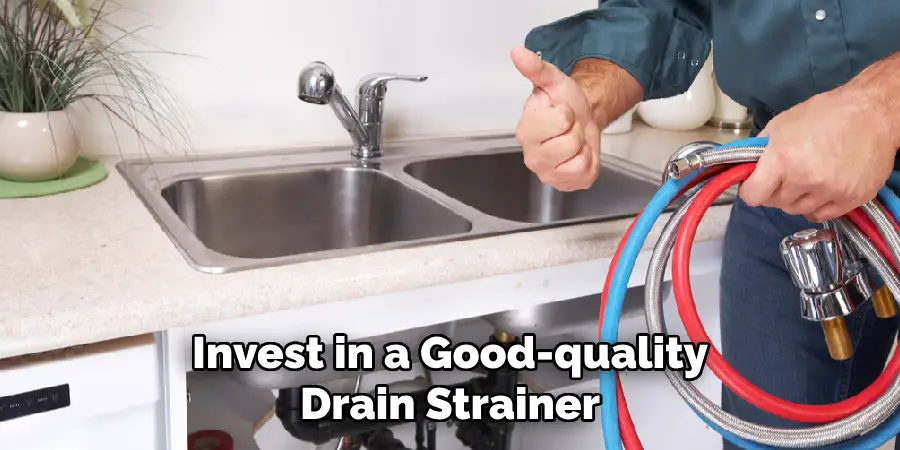
Use a Drain Strainer
Invest in a good-quality drain strainer or sink filter to catch food particles, coffee grounds, and other debris before they enter the drain. Clean the strainer regularly to ensure it remains effective.
Avoid Pouring Grease and Oils Down the Drain
Grease and oils can solidify and create blockages in your pipes. Instead, pour them into a container and dispose of them in the bin. Alternatively, let them cool and scrape them into the trash.
Regular Maintenance
Regularly clean your drain with a mixture of hot water, baking soda, and vinegar to dissolve any buildup before it becomes a problem. Simply pour half a cup of baking soda, followed by a cup of vinegar, down the drain. After letting it sit for 10-15 minutes, flush the drain with boiling water.
Dispose of Food Waste Properly
Avoid putting large quantities of food waste down the garbage disposal. Even with a disposal unit, it’s best to dispose of fibrous or starchy foods, such as coffee grounds, potato peels, and pasta, in the trash.
Run Hot Water After Each Use
Running hot water down the drain for a few seconds after each use helps melt away any fats or oils and keeps debris moving, reducing the chance of buildup.
Use Enzyme Cleaners Periodically
Consider using enzyme-based drain cleaners regularly to break down organic material and prevent clogs. These cleaners use natural enzymes to digest food particles, grease, and other debris.
By incorporating these preventive measures into your routine, you can keep your sink and drains in optimal condition and reduce the likelihood of encountering stubborn clogs in the future.
Common Mistakes to Avoid
While taking steps to prevent and address clogs, it’s important to be aware of common mistakes that can worsen the problem or damage your plumbing. Here are some pitfalls to avoid:
Using Too Much Force with a Plunger
Applying excessive force when using a plunger can damage your plumbing or even dislodge pipe fittings. Ensure you use gentle, consistent pressure and create a good seal around the drain to effectively clear the blockage.
Overusing Chemical Drain Cleaners
Although chemical drain cleaners can be effective, overusing them or using them incorrectly can damage your pipes and create harmful fumes. Use these products sparingly and follow the manufacturer’s instructions carefully.
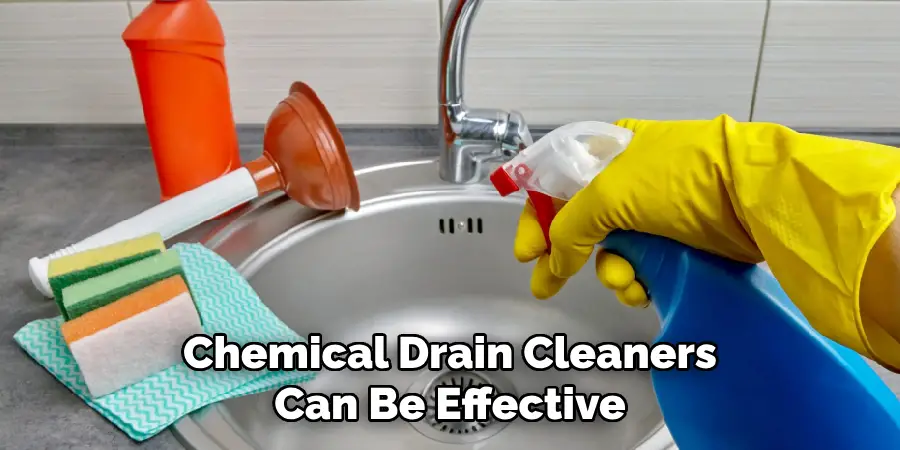
Ignoring Minor Clogs
Small clogs might not seem like a big deal, but they can build up over time and result in a more significant blockage. Address minor clogs promptly to prevent them from escalating into more serious issues.
Flushing Inappropriate Items
Avoid flushing items like wet wipes, paper towels, and sanitary products down the toilet, as they can cause severe clogs in your plumbing system. Dispose of them in the bin instead.
Using the Garbage Disposal Incorrectly
Do not overload the garbage disposal with large quantities of food waste or tough materials like bones and fibrous vegetables. These can damage the disposal unit and create clogs. Always run cold water while using the disposal to help move waste through the pipes.
Neglecting Regular Maintenance
Skipping regular maintenance can lead to buildup and eventual clogs. Make it a habit to clean your drains routinely with hot water, baking soda, and vinegar, or a commercial cleaner, to prevent issues before they arise.
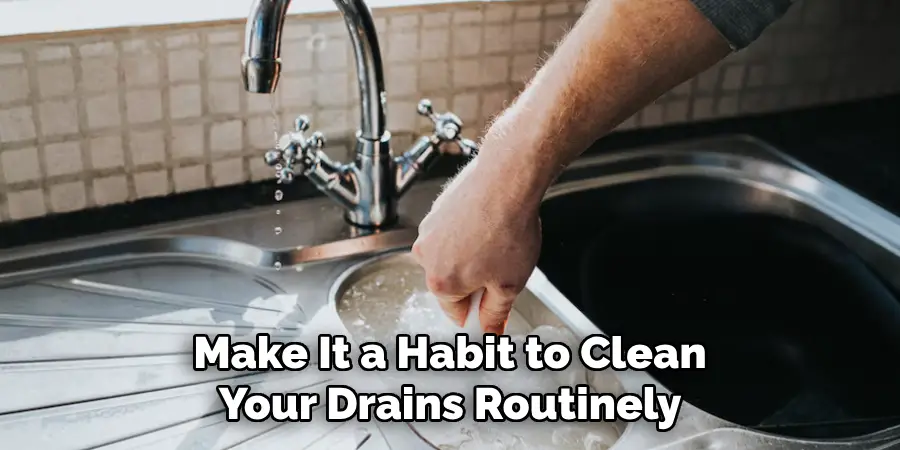
By avoiding these common mistakes, you can maintain efficient plumbing and reduce the likelihood of dealing with persistent clogs in your sink.
Frequently Asked Questions
Q1: How Can I Prevent Coffee Grounds From Clogging My Sink in the Future?
A1: There are several preventative measures you can take to avoid clogging your sink with coffee grounds. Firstly, make sure to properly dispose of used coffee grounds in the bin rather than washing them down the drain. You can also use a stopper or filter to catch any debris before it enters the pipes. Additionally, regularly cleaning your sink’s drain with hot water, baking soda and vinegar, or commercial drain cleaners can prevent buildup and blockages.
Q2: What Should I Do If None of These Methods Work?
A2: If none of these methods prove successful in unclogging your sink, it may be time to call a professional plumber. They have the necessary tools and expertise to quickly and effectively clear any clogs in your sink’s drain. It may cost more than trying to do it yourself, but it can save you time, effort, and potentially prevent further damage or complications. Remember to always handle chemicals with caution and follow the instructions carefully.
Q3: Can I Use These Methods for Other Types of Clogs?
A3: Yes, these methods can be used for other types of clogs in your sink’s drain, such as food particles or soap scum. However, it’s important to note that certain materials may require different unclogging techniques or products. For example, a plunger may not work as effectively on a soap scum clog compared to using hot water and a drain snake. It’s best to research the specific type of clog you are dealing with before attempting any unclogging method. Always consult a professional if you are unsure or the clog persists.
Q4: Are There Any Long-Term Solutions to Prevent Clogs in My Sink?
A4: Yes, there are long-term solutions to prevent clogs in your sink. These can include installing a hair trap or strainer to catch debris before it enters the drain, regularly cleaning your sink’s P-trap to remove buildup, and replacing old or damaged pipes. Additionally, being mindful of what you put down your sink and routinely maintaining your drains can help prevent clogs from occurring in the future.
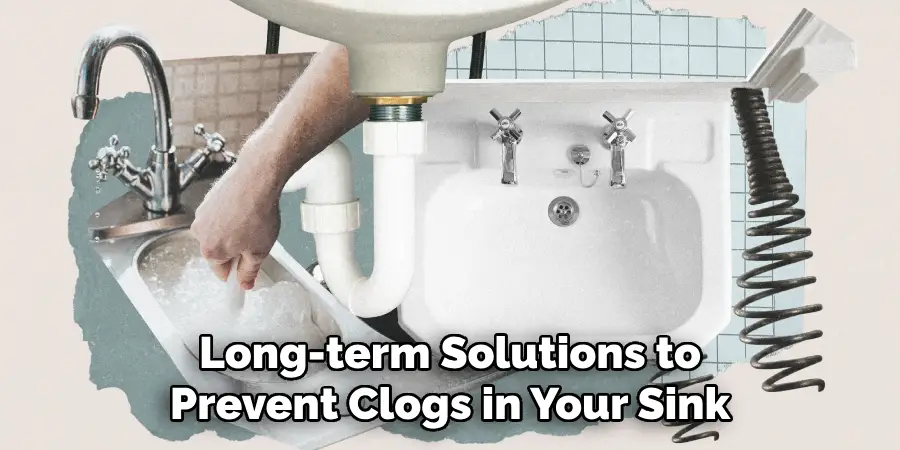
However, if you continue to experience frequent clogs despite these measures, it may be necessary to consult a professional plumber for further inspection and potential repairs. Stay proactive in maintaining your plumbing system to avoid pesky clogs in your sink.
Conclusion
Unclogging a sink clogged with coffee grounds might seem like a daunting task, but by following these comprehensive steps, you can tackle the issue effectively and safely. From the initial plunging to employing natural solutions like baking soda and vinegar, as well as using tools such as a drain snake or wet/dry vacuum, there are multiple methods at your disposal before needing to call a professional plumber.
Preventative measures, such as proper disposal of coffee grounds and regular maintenance of your drains, are just as crucial for keeping your plumbing in good working order. By integrating these practices into your routine, you can ensure that your sink remains free-flowing and prevents future clogs, allowing you to enjoy your coffee without any plumbing hassles. Thanks for reading this article on how to unclog coffee grounds from sink.

